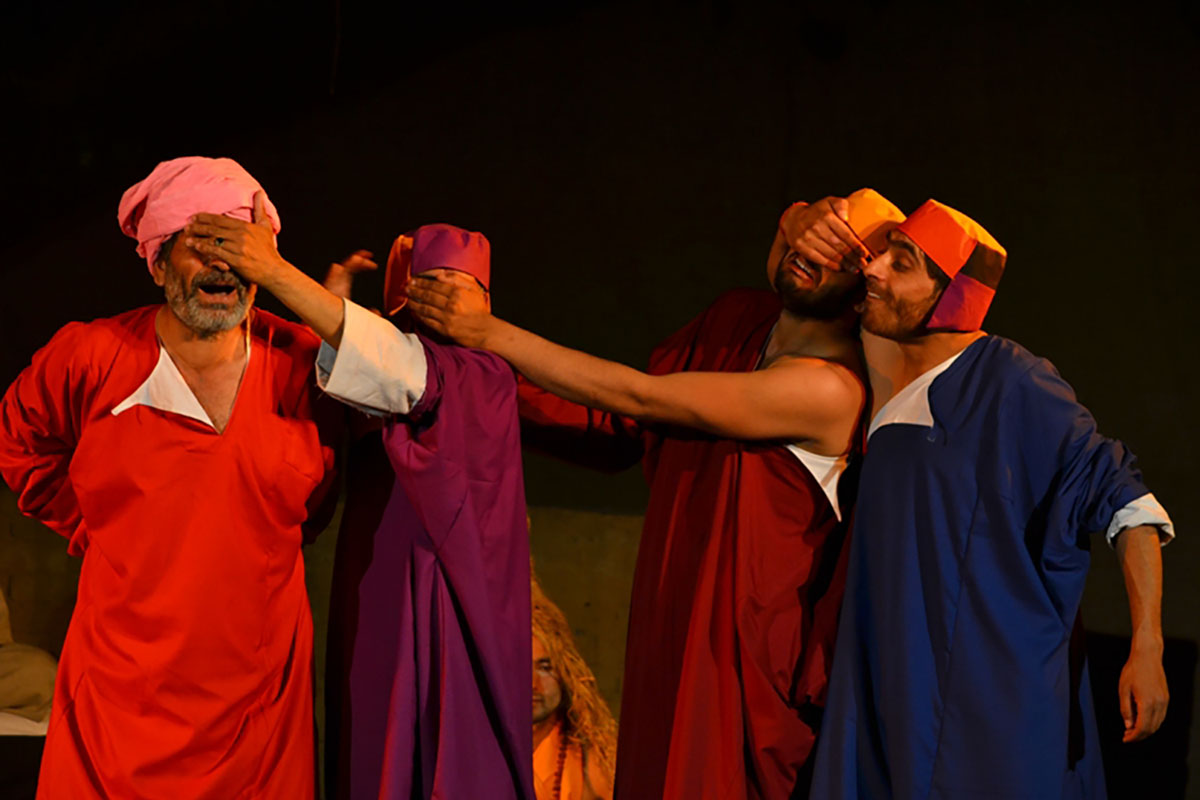ARTICLE
Bhand Pather
A theatre form that incorporates improvisation, clownery and dance, Bhand Pather is practiced in rural areas of Kashmir. Performances typically take place in the summer months, commencing in June. The word “bhand” refers to a folk performer, alluding to the origin of the form: Bhands are said to have migrated to Kashmir from Persia as court jesters in the late medieval period, and men of the Bhand community continue to perform this theatre form today. “Pather” translates to a theatrical performance or scenario. Bhad Pather has been compared by scholars to Ruhawzi, an Iranian theatrical tradition.
Bhand Pather performances usually take place on the ground in open air. A typical performance involves music and dance known as Bhand Jashna or Bhand Chowk, as well as mimicry, imitation and exaggerated comedy. It might open with a dance incorporating footwork and hand movements from Sufi traditions, accompanied by local ragas. Music is provided using the swarnai or shehnai (oboe-like wind instruments), nagari (a small one-sided drum), dhol (percussion drum), harmonium and santoor (dulcimer).
Bhand Pather typically incorporates archetypal characters such as the maskhar (jester), magun (leader), sutradhar (narrator) and kurivol (lasher). The mashkar carries out exaggerated, farcical actions while critiquing the exploitative actions of authorities in the play, while the kuvirol lashes the mashkar for his behaviour. The sutradhar comments on the activities taking place. These characters are mutable and may transform into different ancillary characters depending on the narrative being performed.
There are about ten to twelve of these narratives in Bhand Pather’s repertoire, all of which are derived from Kashmiri history. Wattal Pather, depicting the story of the Wattal tribe, is considered the oldest existing narrative. Other narratives include Shikargarh Pather, named after the Shikargarh wildlife reserve, which employs masks to depict various animals; Bakarwal Pather, depicting the lifestyle of the Bakarwal shepherd tribe; Gosain Pather, depicting devotees traveling to a temple; Raza Pather, a tale of Afghan rule in Kashmir and the atrocities committed by the powerful; and Angrez Pather, the most recent narrative, depicting the oppression of the Kashmiri people by the English.
Bhand Pather troupes were nomadic, travelling from one village to another to perform. The form was popular across Kashmir, with over twenty-five troupes performing until the 1950s. Political disturbances in the region coupled with a lack of state support led to it fading rapidly in the mid to late twentieth century.
There have been some recent efforts to revive Bhand Pather and provide support to the few artists still involved. Theatre actor and director M.K. Raina worked with members of the Bhand community to produce Bhand Pather adaptations of William Shakespeare’s King Lear and Othello. The National Bhand Theatre, one of the few active Bhand Pather troupes in Kashmir, have been performing in centres outside of Kashmir in an effort to keep the form in the limelight. The Tulkul Arts and Media Collective have also used Bhand Pather to inform the general public about legal rights and issues such as the Right to Information Act (2005), National Food Security Act (2013) and the Solid Waste Act (2016), to name a few.
Bibliography
Our website is currently undergoing maintenance and re-design, due to which we have had to take down some of our bibliographies. While these will be re-published shortly, you can request references for specific articles by writing to hellomapacademy@map-india.org.







